Recent Water Damage Posts
Different Ways Your Home Could Flood | SERVPRO of Federal Way
9/22/2024 (Permalink)
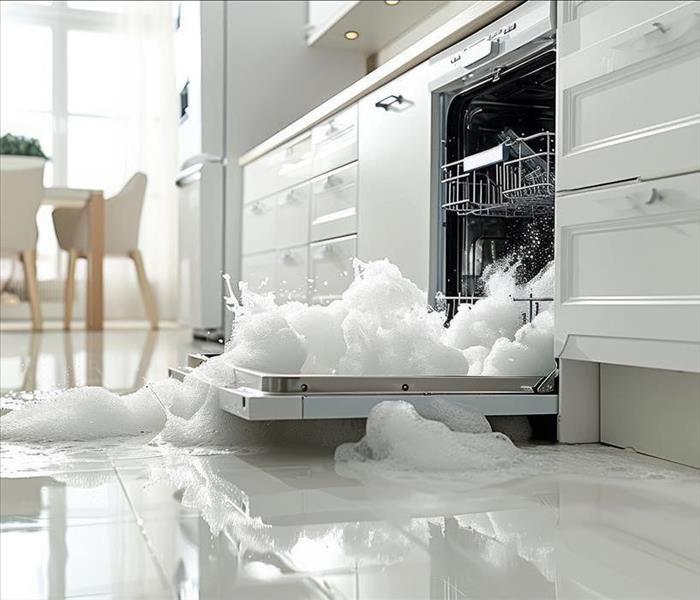 Just one flood can wreak havoc on your property. Reach out to SERVPRO of Federal Way for expert water and structural damage restoration!
Just one flood can wreak havoc on your property. Reach out to SERVPRO of Federal Way for expert water and structural damage restoration!
We all need and rely on water in our homes to get our everyday tasks done and to stay hydrated, but we certainly don’t want water to wind up where it shouldn’t in our homes. Floods are a serious issue that can happen in an instant and cause significant damage in just a matter of minutes.
The force of Mother Nature can create serious flooding problems, but manmade accidents and oversights can also cause floods that end in widespread damage. Check out two different ways that your home could flood below.
Flash Floods
Flash floods are caused by intense rainfall in a short amount of time. They can be caused by severe thunderstorms, hurricanes or tropical storms, or they could even be caused by a broken or compromised dam or levee.
Urban areas are more likely to suffer from flash floods and the damage is often more severe because there is less available soil around to soak up the water.
One of the biggest dangers of flash floods is that they happen quickly and can intensify with very little warning. These situations don’t often give residents much of a heads up and people could be caught unaware and unprepared.
Flash floods can also be incredibly powerful. Fast-moving water has the ability to uproot trees, wash away cars, destroy bridges and infiltrate homes. If floodwater gets into your home during a storm or flash flood situation, stay out of the water and call us for a quicker recovery.
Manmade Floods
These types of floods can be just as destructive and just as unexpected. Manmade floods come in the form of water line accidents or appliance failures.
If a pipe bursts in your basement or your washing machine starts to leak, it can lead to standing water in your basement that will continue to get worse until the situation is addressed and your room is secured.
You should still try to avoid walking through the water even if you are fairly confident where the water came from. Gray water still has the potential to make you sick, and if you aren’t sure how long the water was left standing in your home, it could be harboring potentially dangerous bacteria. Assess the area from a dry location and get us on the phone so we can address your restoration right away.
Our crew will make sure to secure the area, stop the leak and tackle your water damage restoration as quickly as we can. The longer water sits on your floors and against your walls, the worse your damage will become. We work quickly, yet efficiently, to make sure your entire area is dried, restored and cleaned.
A single flood could cause significant water and structural damage. Contact SERVPRO of Federal Way for help.
What to Do About Water Leaks | SERVPRO of Federal Way
3/22/2024 (Permalink)
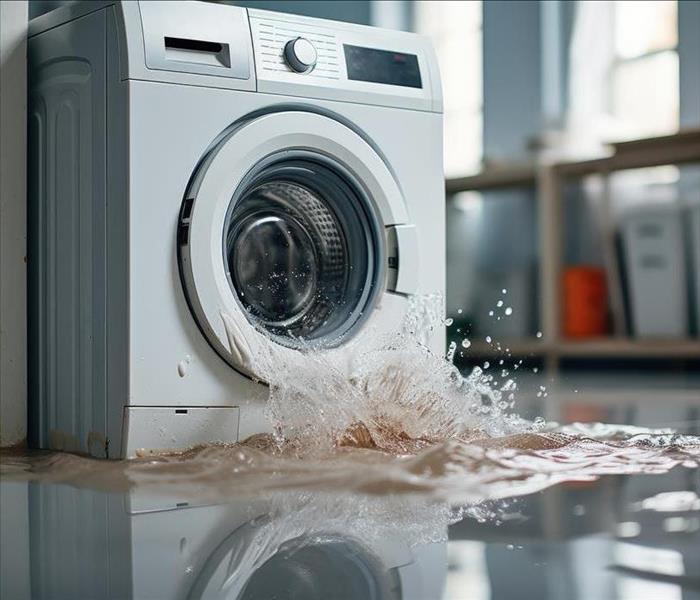 Home water leaks always happen when least expected. Call SERVPRO of Federal Way to restore your house today!
Home water leaks always happen when least expected. Call SERVPRO of Federal Way to restore your house today!
It’s all fun and games until you stumble upon a puddle on your basement floor or are hit with the musty odor of mold when heading into your attic for something. Water leaks are a common catalyst for home damage, but that doesn’t make them any less frustrating to deal with.
Tracking down the original source of the leak is the best way to take control of the situation and stop it at the source. But where do you start? Check out these common locations below and chances are that you will find the culprit quickly.
Going Hunting for Moisture
Our first suggestion is to start by looking around any exterior windows, doors or anywhere else that is directly connected to the elements. It could be as simple as an open window during a rainstorm or the fact that your front door just doesn't hang right anymore and there’s a gap in the door jamb.
Another common place to check are the pipes and water lines that are flowing through our home. Every sink, tub or faucet has some sort of water line that brings water into the space and another lane for bringing it right back out.
That means there are a lot of opportunities for water to leak around those pipes! A single loose connection or worn seal can spring a leak that leads to serious damage.
Checking Your Appliances
How many of you run at least one load of dishes every day? What about loads of laundry? Every time we turn on an appliance that relies on water to function, we are increasing the risk of suffering from a water disaster. After all, all it takes is a simple malfunction or electrical issue for water to start pouring out of the bottom or sides of our machines.
Check your appliances regularly while they are running to feel for moisture and look underneath them often for signs of dripping or leaking. If you do discover a leak caused by your appliance, stay calm and locate the water valve that is connected to the machine. Turn it off to stop the flow of water and then get us on the phone!
Calling SERVPRO® for Help
Water has the sneaky ability to get into all areas of your home in just a few minutes. Once it gets behind your walls, it will leak and seep into every crack and crevice that it can, which can make it really hard to dry out on your own!
That lingering moisture isn’t the only problem, either. The moisture can spark mold infestations and it can also degrade important structural components of your home. This is why a quick professional restoration is so important!
We will make sure to remove the lingering moisture quickly as well as address structural repairs for you. Our team is here to help you overcome water damage 24/7.
We can help you overcome water leaks. Call SERVPRO of Federal Way today!
3 Essential Steps to Prepare Your Home for Cooler Weather and Prevent Water Damage
10/18/2023 (Permalink)
 Seattle isn't known for its snow, but it still happens here. Make sure your home is prepared, just in case.
Seattle isn't known for its snow, but it still happens here. Make sure your home is prepared, just in case.
As the temperature starts to drop and the leaves change color, homeowners need to prepare for the incoming cooler weather. One of the most significant threats to your home during this season is water damage. Rain, snow, and freezing temperatures can wreak havoc on your property if you're not adequately prepared. To help you safeguard your investment and maintain your home's integrity, here are three essential steps you should take to prevent water damage during the colder months.
1. Clean and Inspect Your Gutters and Downspouts
Your gutters and downspouts are your home's first line of defense against water damage. They are responsible for directing rainwater and melted snow away from your foundation and walls. However, if they are clogged with leaves, debris, or other obstructions, they won't be able to do their job effectively. Here's what you should do:
Clean Your Gutters: Remove leaves, twigs, and any other debris that may have accumulated in your gutters. This will ensure that water can flow freely through them.
Inspect for Damage: Check your gutters and downspouts for any signs of damage, such as rust or cracks. Replace any damaged sections to maintain their efficiency.
Consider Gutter Guards: Installing gutter guards can help prevent leaves and debris from clogging your gutters in the future.
By ensuring your gutters and downspouts are in good working condition, you can prevent water from overflowing and potentially seeping into your home's foundation or causing other forms of water damage.
2. Seal Any Cracks and Gaps in Your Home's Exterior
The smallest cracks and gaps in your home's exterior can become major entry points for water during cooler weather. Water infiltration can lead to structural damage, mold growth, and higher energy bills. To prevent these issues, follow these steps:
Inspect Your Home's Exterior: Carefully examine your home's exterior for cracks, gaps, or deteriorating caulk around windows, doors, and other openings.
Seal Cracks and Gaps: Use caulk or weatherstripping to seal any cracks or gaps you find. Pay special attention to areas where different building materials meet, as these are common trouble spots.
Consider Insulating Your Home: Proper insulation can not only prevent water infiltration but also help maintain a comfortable indoor temperature and reduce energy costs.
By proactively sealing any potential entry points for water, you can keep your home warm and dry during the colder months.
3. Winterize Your Plumbing System
Frozen pipes are a common problem during the winter, and they can lead to significant water damage if they burst. To prevent this, take the following steps to winterize your plumbing system:
Insulate Pipes: Insulate exposed pipes in unheated areas of your home, such as the attic or crawl spaces. Use pipe insulation or heat tape to keep them warm.
Drain Outdoor Faucets: Disconnect hoses and drain outdoor faucets to prevent water from freezing in the pipes.
Keep the Heat On: If you're leaving your home for an extended period during the winter, be sure to keep the heat on at a minimal temperature to prevent pipes from freezing.
By properly winterizing your plumbing system, you can avoid the costly and messy aftermath of burst pipes.
Preparing your home for cooler weather is crucial to prevent water damage and keep your property in excellent condition. By cleaning and inspecting your gutters, sealing cracks and gaps, and winterizing your plumbing system, you'll be well-equipped to face the challenges of the colder months. These simple steps can save you money, time, and a lot of headaches in the long run, ensuring your home remains a safe and comfortable haven throughout the winter season.
5 Essential Fall Maintenance Tips to Prevent Water Damage in Your Federal Way Home
9/11/2023 (Permalink)
 Be ready for a beautiful autumn by keeping up with water damage prevention.
Be ready for a beautiful autumn by keeping up with water damage prevention.
Fall is a beautiful season in Federal Way, Washington, with colorful foliage and cooler temperatures. However, it also comes with the potential for heavy rainfall that can lead to water damage in your home. Preventing water damage requires proactive measures to protect your property. In this blog, we'll explore five crucial steps that Federal Way homeowners can take this fall to safeguard their homes from water damage.
1. Clean and Maintain Gutters and Downspouts
One of the most common causes of water damage in homes is clogged gutters and downspouts. Falling leaves and debris can block the flow of water, leading to overflow and potential water intrusion.
Action Plan:
- Regularly clean your gutters and downspouts, especially during the fall season.
- Ensure that downspouts direct water away from the foundation of your home, ideally at least 3-4 feet away.
2. Inspect and Repair Roof
Your roof is your first line of defense against water infiltration. Damaged or missing shingles can allow water to seep into your home, leading to costly repairs.
Action Plan:
- Inspect your roof for missing, damaged, or curled shingles.
- Replace or repair any damaged shingles promptly.
- Check for signs of leaks or water stains in your attic or ceiling.
3. Seal Windows and Doors
Gaps and cracks around windows and doors can allow rainwater to infiltrate your home. Proper sealing can prevent water damage and also improve energy efficiency.
Action Plan:
- Use weatherstripping or caulk to seal gaps around windows and doors.
- Check for damaged or deteriorating seals and replace them as needed.
- Ensure that windows and doors close tightly to prevent drafts and leaks.
4. Maintain Your Landscape
Landscaping plays a significant role in preventing water damage. Proper grading and drainage can direct water away from your home's foundation.
Action Plan:
- Inspect the grading around your home. Ensure that the ground slopes away from the foundation.
- Trim trees and bushes near your home to prevent them from overhanging your roof or blocking drainage pathways.
- Consider installing a French drain or other drainage solutions if you have persistent water issues.
5. Test Sump Pump and Check Basement
If your home has a sump pump, fall is an ideal time to ensure it's functioning correctly. A well-maintained sump pump can prevent basement flooding during heavy rains.
Action Plan:
- Test your sump pump by pouring water into the pit and ensuring it activates properly.
- Clean the sump pit of any debris.
- Inspect your basement for signs of moisture or leaks and address any issues promptly.
Preventing water damage in your Federal Way home this fall requires diligence and regular maintenance. By following these five essential steps, you can protect your home from the potentially devastating effects of water intrusion. Taking proactive measures now can save you both time and money in the long run while preserving the comfort and safety of your home. Don't wait; start your fall maintenance routine today to ensure a dry and secure home throughout the season
Protecting Your Home: Understanding and Preventing Water Damage
4/28/2023 (Permalink)
 Prevention is key! Regularly checking common areas for water damage can save you from a headache later on.
Prevention is key! Regularly checking common areas for water damage can save you from a headache later on.
Water damage ranks among the most prevalent and destructive issues that homeowners can face. Left unchecked, it can wreak havoc on a property, fostering mold growth, structural deterioration, and an array of associated problems. To safeguard your home effectively, it's crucial to recognize the key areas where water damage is most likely to occur and to understand why prompt action is vital. Additionally, we'll explain why choosing SERVPRO® in Federal Way is a wise decision for addressing water damage concerns.
Common Areas Prone to Water Damage
Bathroom: The bathroom stands as one of the primary battlegrounds against water damage due to its numerous water sources—sinks, toilets, bathtubs, and showers. Over time, water can seep from these fixtures and infiltrate the walls, floors, and other bathroom areas. Preventing bathroom water damage involves regular leak checks and immediate repairs. Adequate ventilation is also essential to reduce moisture levels and deter mold growth.
Kitchen: Water damage is a frequent kitchen intruder, driven by appliances and fixtures that rely on water, such as sinks, dishwashers, and refrigerators. Like in bathrooms, leaks and their resultant damage can manifest in the kitchen. Additionally, unexpected events like pipe bursts or flooding can lead to water damage. Preventative measures include vigilant leak detection and timely repairs, along with effective ventilation to mitigate moisture and mold risks.
Basement: For homes with below-ground foundations, the basement is a prime target for water damage. Intrusion can occur through wall or foundation cracks, as well as due to flooding from heavy rainfall or snowmelt. Basements house valuable possessions and living spaces that are vulnerable to water damage. Prevention involves ensuring proper foundation sealing, prompt repair of cracks and leaks, and the consideration of a sump pump installation to combat potential flooding.
Roof: A compromised roof is an open invitation to water damage. Damage or missing shingles can allow water infiltration, leading to attic and home interior damage. Clogged gutters can exacerbate the problem by causing overflowing water to harm both the roof and walls. Regular roof inspections, immediate damage or missing shingle repairs, and gutter maintenance are essential preventative measures.
Why Choose SERVPRO of Federal Way
While understanding and preventing water damage are crucial, it's equally essential to have a trusted partner in the event of damage. Here's why people in Federal Way should choose SERVPRO:
Expertise: SERVPRO possesses extensive knowledge and experience in mitigating water damage effectively, regardless of its source or extent.
Prompt Response: Water damage requires immediate action. SERVPRO provides rapid responses to address damage promptly and minimize its impact.
Advanced Equipment: Our cutting-edge equipment and techniques ensure thorough water removal, drying, and restoration.
Preventing Mold: Mold growth is a common consequence of water damage. SERVPRO's expertise in mold remediation prevents its proliferation.
Insurance Coordination: Dealing with insurance claims can be daunting. SERVPRO assists in streamlining the process, ensuring you receive the coverage you deserve.
Peace of Mind: Choosing SERVPRO affords peace of mind, knowing that professionals with a proven track record are handling your water damage restoration needs.
In Federal Way, recognizing the risk factors for water damage and acting promptly are essential steps in preserving your home. But when water damage does occur, choosing SERVPRO ensures that your property is in capable hands, poised to be restored to its pre-damage condition swiftly and effectively.
Preparing for Water Damage in Federal Way: Why Choose SERVPRO®
1/23/2023 (Permalink)
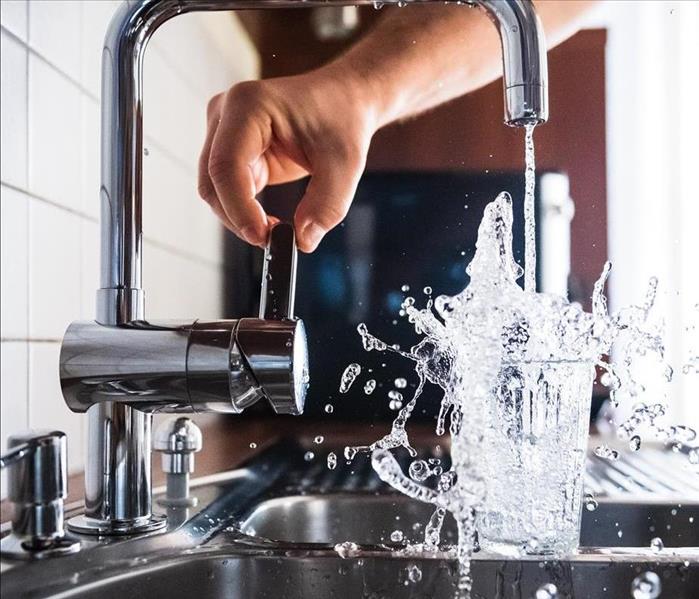 Sinks are a common area for water damage to originate.
Sinks are a common area for water damage to originate.
Water damage can be a homeowner's worst nightmare, causing extensive harm to property and possessions. In Federal Way, safeguarding your home against potential water damage is paramount. While water-related issues can be daunting, staying informed and proactive can make all the difference. In this guide, we'll not only explore common areas to check for water damage and their associated signs but also shed light on why residents of Federal Way should consider SERVPRO® as their trusted partner in mitigation and restoration.
Areas to Check Around the Home
Washer and Dryer: These household workhorses can sometimes turn into silent culprits. Keep a vigilant eye on the water supply line to your washer, as leaks or bursts in this area can lead to significant troubles. Regularly inspecting this frequently used appliance can help you stay ahead of potential issues.
Sinks and Bathtubs: Areas consistently exposed to water, such as sinks and bathtubs, are susceptible to water damage. Leaking pipes in these locations are often the first signs of impending trouble. Pay attention to discolored caulking, as it can indicate mold growth resulting from water damage. Early detection and maintenance are key to preventing further damage.
Walls: Your home's walls can silently harbor moisture damage. Watch for discolored patches, changes in texture, warping, or mold growth, as these are indicative of hidden moisture issues. Being proactive about identifying wall damage can save you from potential headaches down the road.
While these areas are essential to monitor, it's essential to remember that water damage can occur throughout your home. Continuous research and proactive homecare are invaluable in safeguarding your property.
Causes of Water Damage
Extreme Weather: Federal Way experiences various weather conditions, including cold spells. Cold weather, in particular, poses a risk as frozen pipes can lead to plumbing misalignment or ruptures. When the ice thaws, water can seep through these ruptures, resulting in extensive water damage. This type of damage can be vast and costly.
Clogged Gutters: Neglected gutters can cause roof damage and allow water to infiltrate your home. Excess water runoff along the siding can lead to erosion and further issues. Regular gutter maintenance is crucial to prevent these problems and protect your property.
Leaking Pipes or Blocked Drains: Aging plumbing components can wear out over time, leading to small, unnoticed leaks. By the time these leaks become apparent, significant water damage may have occurred. Additionally, blocked drains can exert pressure on your plumbing, accelerating age-related issues and potentially causing burst pipes.
In Federal Way, the key to preventing water damage lies in routine home maintenance. However, should you ever experience water-related issues, rest assured that SERVPRO is here to provide expert restoration and mitigation services. Our trained professionals understand the unique challenges of water damage in Federal Way and are committed to helping you restore your home to its pre-damage condition. Choose SERVPRO for prompt, reliable, and trusted water damage solutions.
SERVPRO®'s Expert Water Removal Services in Federal Way: Why Choose Us?
2/25/2022 (Permalink)
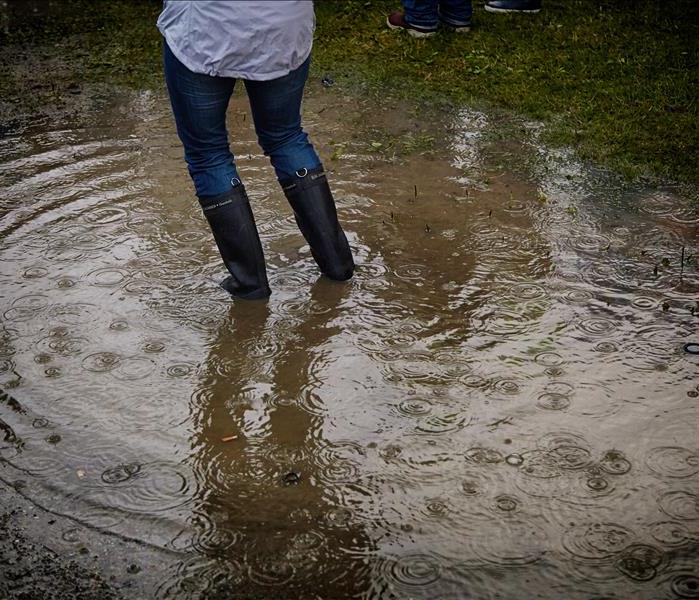 Submersible pumps are among the most versatile tools for water removal in Federal Way homes.
Submersible pumps are among the most versatile tools for water removal in Federal Way homes.
Effective water removal is a critical step in mitigating damage to your Federal Way home or business. It requires a strategic blend of tools and techniques, a task that our SERVPRO® team excels in. Swift water extraction is essential, but it also demands careful consideration of factors such as the affected materials, water depth, and the most efficient extraction methods. Here's why you should choose SERVPRO for your water removal needs.
The Versatility of Submersible Pumps
Submersible pumps are among the most versatile tools for water removal in Federal Way homes. These electrically powered, fairly mobile units are adept at addressing various obstacles, including the provision of necessary energy to sustain continuous water removal. Offering a quiet and steady water draw, they can efficiently manage the extraction of hundreds of gallons of standing water within a short timeframe.
Challenges Faced by Submersible Pumps
However, submersible pumps may not always be the ideal choice. When water levels are too shallow, these pumps struggle to maintain the prime necessary to draw water into the unit and push it through the discharge line. In urgent situations involving more substantial damage, more powerful extraction equipment is required.
Optimizing Water Removal with a Range of Extractors
To manage varying levels of standing water efficiently, different types of pumps and extractors are needed as the affected area extends away from the source. In addition to submersible pumps, our inventory includes several other water removal devices:
Truck-Mount Pumps: These engine-driven units, mounted on our Green Fleet vehicles, provide substantial power and suction capabilities.
Trash Pumps: Gas-powered trash pumps offer a robust alternative to electric units and are particularly useful when electricity is challenging to access.
Wet Vacuums: Ideal for scenarios requiring attachments or when standing water is too shallow for truck-mounted units.
Why Choose SERVPRO?
Water removal services play a pivotal role in mitigating losses in homes and businesses affected by plumbing disasters and flooding incidents. As WRT-Certified technicians, our SERVPRO of Federal Way team is well-equipped to efficiently extract water, facilitate drying, and conduct thorough cleaning in water-damaged properties. We prioritize your property's restoration and your peace of mind. Contact us now at (253) 838-8999 for prompt and effective water removal services. Choose SERVPRO for your Federal Way property's water damage restoration needs.
Choose SERVPRO® for Expert Water Removal in Des Moines
2/5/2022 (Permalink)
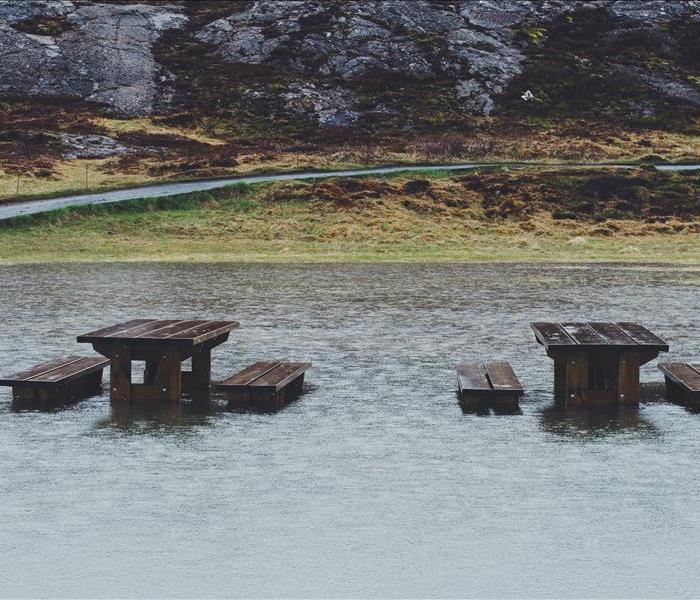 Addressing water damage in Des Moines can be especially challenging when it infiltrates tight, hard-to-reach areas.
Addressing water damage in Des Moines can be especially challenging when it infiltrates tight, hard-to-reach areas.
Addressing water damage in Des Moines can be especially challenging when it infiltrates tight, hard-to-reach areas like basements, walk-outs, crawl spaces, and concealed building cavities. Water intrusion within walls or structural materials further complicates the situation. At SERVPRO®, we specialize in detecting and removing hidden pockets of water, and we want to share why choosing us is the best decision for your property.
Detecting Hidden Water with Precision
Identifying concealed moisture within your Des Moines property is a crucial initial step in the restoration process. SERVPRO technicians employ advanced tools and techniques to pinpoint hidden water:
Moisture Sensors: These penetrating probes help detect the presence of water.
Moisture Meters: These devices measure the amount of water absorbed by porous materials.
Infrared Imaging Camera: Our infrared camera reveals temperature variations that indicate the presence of water behind surfaces. Our trained technicians interpret these images to assess the situation accurately.
Visual Inspections: Signs such as peeling paint, wall or ceiling bulges, and visible staining or "sweating" on surfaces can provide valuable clues to the presence of trapped water.
Efficient Water Extraction from Confined Spaces
Once we've determined the extent of water intrusion, our technicians employ specific strategies to remove water from challenging spaces:
Submersible Pumps: These pumps, connected to hoses, effectively remove visible water from low-lying and ceilinged areas like basements or crawl spaces. The extracted water is directed to a drain or outside.
Portable Extractor Wands: For water that has seeped through foundations and accumulated in areas like cinder block cells or between drywall and concrete, our technicians use portable extractor wands. In some cases, we may drill holes into mortar joints to facilitate extraction.
Weep Holes and Flood Cuts: In cases where water pools above a ceiling or is trapped between walls, we create weep holes to allow drainage. For water between walls, we drill or cut holes at the baseboard level to facilitate drainage. If materials are compromised, we may perform flood cuts by removing damaged walls between studs several inches above the waterline.
At SERVPRO of Federal Way, we thrive on tackling water damage challenges and delivering innovative solutions, even in the most challenging circumstances. Contact us at (253) 838-8999 to discuss our comprehensive water damage restoration services and choose the experts who understand the intricacies of water removal in Des Moines.
 Just one flood can wreak havoc on your property. Reach out to SERVPRO of Federal Way for expert water and structural damage restoration!
Just one flood can wreak havoc on your property. Reach out to SERVPRO of Federal Way for expert water and structural damage restoration!






 24/7 Emergency Service
24/7 Emergency Service






